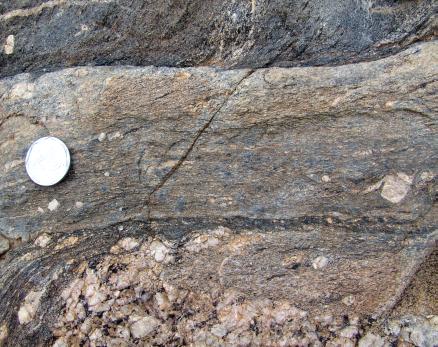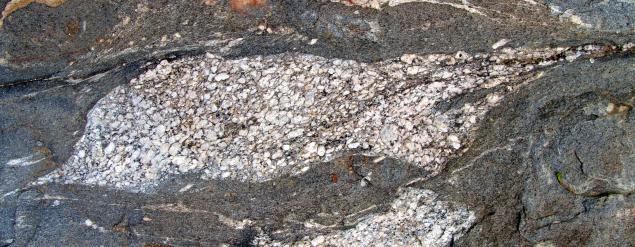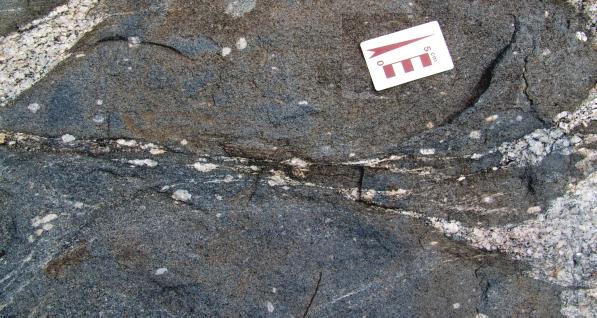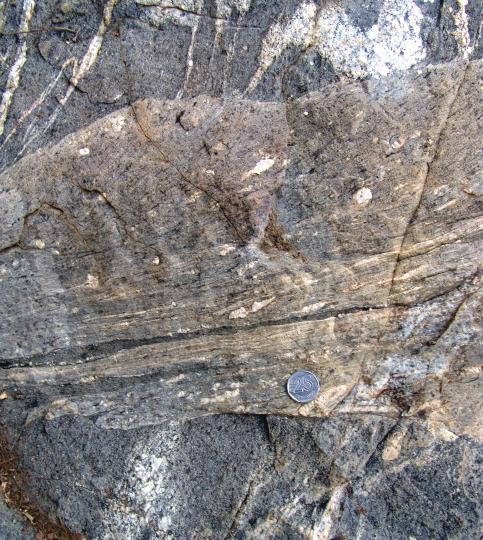| This web page documents a case of extreme strain localization and partitioning during late, syn-emplacement deformation of the 530Ma Prata Pluton in the Borborema Province. All photos are from a single 10m long dyke trending 100/sv, cutting across deformed plutonic rocks, with a simple shear foliation at high angle to the dyke orientation trending 025/sv (point 30, 24M 0712654E 9133326N). Here, the dyke is deformed contemporaneously with the surrounding pluton, but provide a weakness plane at a different orientation which is used to take up dextral shearing parallel to the dyke, producing a mylonitic foliation, S-C fabric and shearing of phenocrysts. |
|
Mingled diorite and granite outcrop of the Prata Pluton including in the forefront a migmatite country rock xenolith. This mingled rock hosts the porphyitic dacite dyke. |
 Detail of Figure 1b, dextral shearing indicated by sheared phenocrysts. |

|

|
| Detail. NE is to the right. | Detail of shear zone. NE is to the right. |
| The dextral shearing on a plane trending 100 indicates shortening oriented approximately NW-SE, which is a regionally important orientation during the Brasiliano in this Borborema Province. More specifically this orientation is important around the Prata Pluton and controls emplacement of NW-trending porphyritic datice dykes in the gneissic country rocks and the NE-elongation of the pluton. However, it does not match the inferred shortening axis derived from the shearing of the host diorite-granite mingled body. Structures here indicate dextral shearing trending NNE-SSW nearly parallel to syn-magmatic axial plane of folds. Two separate strain phasse could be inferred from this. However, the drag folds in and around the late dyke indicates continuity between the NNE-trending foliation in the dyke and in the host rock. So currently there is no clear answer. The most likely in my view is that the current NNE trend of dextral shearing in the host magmatic rocks has been rotated from its original orientation towards the maximum shortening plane. |
